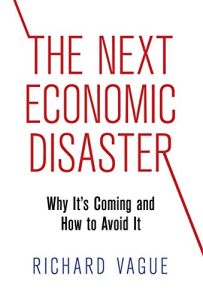Join getAbstract to access the summary!

Join getAbstract to access the summary!
Richard Vague
The Next Economic Disaster
Why It’s Coming and How to Avoid It
University of Pennsylvania Press, 2014
What's inside?
Nearly all private-sector credit booms lead to financial crises.
Recommendation
In fewer than 100 pages, author Richard Vague sets out to persuade you that the relative and absolute levels of privately held debt within a major economy can predict financial crises. Economic growth always includes the growth of private credit, but periodic booms push the economy out of sync and into crisis. Vague says he’s created an algorithm – not in the book but available online – that can predict these booms and busts, making them preventable. Additionally, he advocates for measures to restructure private-sector loans that would bring borrowers and the economy quickly back to normal after crashes. Though some of his arguments could use greater elucidation and sourcing, and some of his proposals seem contradictory, getAbstract suggests this concise work to those curious about the potential causes and cures of financial crises.
Summary
About the Author
Richard Vague, a former banker, is currently a managing partner of Gabriel Investments and the chairman of the Governor’s Woods Foundation, a philanthropic enterprise.


















Comment on this summary